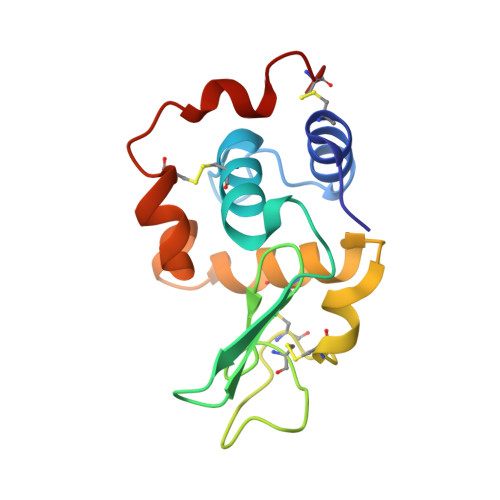Role of amino acid residues in left-handed helical conformation for the conformational stability of a protein.
Takano, K., Yamagata, Y., Yutani, K.(2001) Proteins 45: 274-280
- PubMed: 11599030
- DOI: https://doi.org/10.1002/prot.1147
- Primary Citation of Related Structures:
1IP1, 1IP2, 1IP3, 1IP4, 1IP5, 1IP6, 1IP7 - PubMed Abstract:
Our previous study of six non-Gly to Gly/Ala mutant human lysozymes in a left-handed helical region showed that only one non-Gly residue at a rigid site had unfavorable strain energy as compared with Gly at the same position (Takano et al., Proteins 2001; 44:233-243). To further examine the role of left-handed residues in the conformational stability of a protein, we constructed ten Gly to Ala mutant human lysozymes. Most Gly residues in human lysozyme are located in the left-handed helix region. The thermodynamic parameters for denaturation and crystal structures were determined by differential scanning calorimetry and X-ray analysis, respectively. The difference in denaturation Gibbs energy (DeltaDeltaG) for the ten Gly to Ala mutants ranged from + 1.9 to -7.5 kJ/mol, indicating that the effect of the mutation depends on the environment of the residue. We confirm that Gly in a left-handed region is more favorable at rigid sites than non-Gly, but there is little difference in energetic cost between Gly and non-Gly at flexible sites. The present results indicate that dihedral angles in the backbone conformation and also the flexibility at the position should be considered for analyses of protein stability, and protein structural determination, prediction, and design.
Organizational Affiliation:
Institute for Protein Research, Osaka University, Osaka, Japan.















